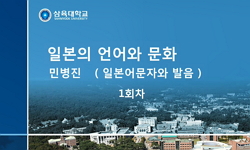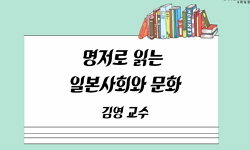This article is an overview of the Pre-modern history in Japan when Kirishitans were severely persecuted and martyred in 17th and 18th century. The primary focus is on how three Japanese rulers, Nobunaga Oda, Hideyoshi Toyotomi and Ieyasu Tokugawa enc...
http://chineseinput.net/에서 pinyin(병음)방식으로 중국어를 변환할 수 있습니다.
변환된 중국어를 복사하여 사용하시면 됩니다.
- 中文 을 입력하시려면 zhongwen을 입력하시고 space를누르시면됩니다.
- 北京 을 입력하시려면 beijing을 입력하시고 space를 누르시면 됩니다.

Christian Causation to Persecution in Shoku-Ho & Edo Period : How Japanese Rulers Encountered with Christianity?
한글로보기https://www.riss.kr/link?id=A106280068
-
저자
EikoTakamizawa (횃불트리니티신학대학원대학교)

- 발행기관
- 학술지명
- 권호사항
-
발행연도
2019
-
작성언어
English
-
주제어
일본 ; 키리쉬탄(Kirishitan) 박해 ; 예수회 ; 오다 노부나가 ; 도요토미히데요시 ; 도쿠가와 이에야스 ; Japan ; Kirishitan Persecution ; the Jesuits ; Nobunaga Oda ; Hideyoshi Toyotomi ; Ieyasu Tokugawa
-
등재정보
KCI등재
-
자료형태
학술저널
-
수록면
391-423(33쪽)
-
KCI 피인용횟수
0
- DOI식별코드
- 제공처
-
0
상세조회 -
0
다운로드
부가정보
다국어 초록 (Multilingual Abstract)
This article is an overview of the Pre-modern history in Japan when Kirishitans were severely persecuted and martyred in 17th and 18th century. The primary focus is on how three Japanese rulers, Nobunaga Oda, Hideyoshi Toyotomi and Ieyasu Tokugawa encountered with Christianity that led to the atrocious persecution of Kirishitans and seclusion of the nation. Nobunaga’s generous permission to missionaries for their propagation was related to his interests in and appreciation for their sincere faith and the trade benefits through them. However, Nobunaga was never converted to Christianity, rather, at his last moment he deified himself and demanded worship from his people. The next ruler, Hideyoshi, succeeded Nobunaga’s favorable relationship with missionaries, and he granted permission for the missionaries to propagate Christianity with the conditions that missionaries would provide military ships. The missionary Coelho did not fulfill the negotiation. Hideyoshi also found out that many daimyos in Kyushu area became Kirishitans and dedicated Nagasaki to Pope.
Knowing these Christian influences in Japan, Hideyoshi changed his attitude toward missionaries and expelled them. The public questionnaire given to Jesuits were about their exclusive teaching and aggressive propagation as well as the slave trade mediated by missionaries. Thus, Hideyoshi banned missionaries and arrested 26 missionaries and Kirishitans to martyr in Nagasaki as the first persecution. Ieyasu, the third ruler, was clearly aware of the missionaries’ political agenda and observed the internal conflicts among the missionaries. Ieyasu had shifted the trading partners from Roman Catholic missionaries to the ones from Protestant nations, Dutch and England, who did not emphasize religious propagation. However, he realized the resilient missionaries’ activities by Roman Catholic missionaries and believers, Ieyasu and his successors in Tokugawa Dynasty took atrocious nationwide campaign of Christianity and the seclusion policy against Christianity.
Six points for analysis are observed. (1) Christian mission, which was intertwined with political and economic agenda, damaged the genuineness of the Gospel and Mission. (2) Christian actions that question their integrity can lead to total rejection.
Aggressive actions by Kirishitan daimyos and the missionaries and their involvement in slave trading caused suspicions and doubts about Christian Mission. (3) The internal conflicts and competition among Christians caused the suspicion intensified among Japanese rulers. Are Today’s Mission activities free from any form of internal conflicts among Christians? (4) Condescending attitude by Christian missionaries and believers caused the negative consequence by Japanese rulers that eventually led to the rejection of Christianity. (5) The contextualization observed in “Wabi Cha” developed by Senno Rikyu might have caused Hideyoshi to anger and ban mission activities. This gives a question to today’s mission method, the advanced contextualization named, Insider Movement, could be regarded as deception. (6) Genuine commitment of the missionaries and Kirishitan martyrs who demonstrated their faith until their death was threat to the Japanese authority, but at the same time strong witnesses and hope in the Christian faith.
참고문헌 (Reference)
1 장훈태, "성경적 선교사 윤리 모델" 한국복음주의선교신학회 14 (14): 261-292, 2011
2 이훈구, "다니엘서에 나타난 하나님의 선교 연구" 한국복음주의선교신학회 14 (14): 233-260, 2011
3 Yoshida, Kosei, "Tosa Monogatari, 1708" Chosokabe Motochika Ki 1632
4 Yoshida, Kosei., "Tosa Monogatari" Kawano Mitue 1975
5 Pagges, Leon, "Tokugawa Ieyasu to Elizabetsu I: Osaka no Jin no Shinjitsu"
6 Driem, George van, "The Tale of Tea: A Comprehensive History of Tea from Prehistoric Times to the Present Day" Brill 2019
7 Boxer, C.R., "The Christian Century in Japan 1549-1650" University of California Press 1967
8 Parry, J.H., "The Age of Reconnaissance: Discovery, Exploration and Settlement" University of California Press 1982
9 E-Kokuho. National Museum, "Tensho Kenou Shisetsu Ki"
10 Suzuki, Kahoru, "Supein Gaiko to Uraga Minato"
1 장훈태, "성경적 선교사 윤리 모델" 한국복음주의선교신학회 14 (14): 261-292, 2011
2 이훈구, "다니엘서에 나타난 하나님의 선교 연구" 한국복음주의선교신학회 14 (14): 233-260, 2011
3 Yoshida, Kosei, "Tosa Monogatari, 1708" Chosokabe Motochika Ki 1632
4 Yoshida, Kosei., "Tosa Monogatari" Kawano Mitue 1975
5 Pagges, Leon, "Tokugawa Ieyasu to Elizabetsu I: Osaka no Jin no Shinjitsu"
6 Driem, George van, "The Tale of Tea: A Comprehensive History of Tea from Prehistoric Times to the Present Day" Brill 2019
7 Boxer, C.R., "The Christian Century in Japan 1549-1650" University of California Press 1967
8 Parry, J.H., "The Age of Reconnaissance: Discovery, Exploration and Settlement" University of California Press 1982
9 E-Kokuho. National Museum, "Tensho Kenou Shisetsu Ki"
10 Suzuki, Kahoru, "Supein Gaiko to Uraga Minato"
11 Gyuichi, Ota, "Shincho Koki"
12 Kurokawa, Tomobumi, "Nihonshi ni Okeru Kirisutokyo Senkyo [Christian Mission in Japanese History]" Kyobunkan 2014
13 Nakamura, Bin, "Nihon Kirisutokyo Senkyo Shi: Before Xavier to Today" Inochi no Kotoba Sha 2009
14 Higashibara, Ikuo, "Kirishitanshi Saikou: Shinko Juyo no Shukyogaku" Tenri Daigaku Oyasato Kenkyujo 2006
15 Higashibara, Ikuo, "Kirishitan Daimyoshi Saikou: Shinko Juyo no Shukyogaku" Tenri Daigaku Oyasato Kenkyujo 2006
16 Tokutomi, Soho, "Kinsei Nihon Kokuminshi Toyotomi Jidai"
17 Russell, John G., "Excluded Presence: Shoguns, Minstrels, Bodyguards, and Japan’s Encounter with Black Others" 40 : 24-, 2008
18 Nosco, Peter, "Confucianism and Tokugawa Culture" University of Hawaii Press 1997
19 Higashibara, Ikuo, "Christianity in Early Modern Japan: Kirishitan Belief and Practice" Brill 2001
20 Yamato, Shohei, "Chano Yu no Michi ha Seisho ni Tsuzuku: Senno Rikyu ha Kurisuchandatta [Tea Ceremony leads to the Bible: Senno Rikyu was a Christian"
21 Takahashi, Toshio, "Busho Takayama Ukon no Shinko to Cha no Yu" Inochi no Kotobasha, Forest Books 2007
22 Kanda, Chisato, "Bateren Tsuiho ni Kansuru Ichikousatsu: Luis Fruis no Bunsho wo Chushinni [A Study of Bateren Deportation Order: Exploring the Documents by Luis Frois]" 37 : 65-110, 2011
23 Karibe, Tadashi, "Arai Hakuseki and Seiyo Kibun" Nihon Shisoshi no Meicho wo Yomu
24 Ross, Andrew C., "A Vision Betrayed: The Jesuits in Japan and China, 1542-1742" Orbis Books 1994
25 Ohashi,Yukiyasu, "16-19 Seiki Nihon Kirihitan No Juyo, Kinsei and Sempuku" 12 (12):
26 Ohashi, Yukiyasu, "16-19 Seiki Nihon Kirihitan No Juyo, Kinsei and Sempuku" 12 (12):
동일학술지(권/호) 다른 논문
-
- 한국복음주의선교신학회
- 김다니엘
- 2019
- KCI등재
-
카자흐스탄 카라칼팍 민족 디아스포라의 선교적 의미와 사역 방향
- 한국복음주의선교신학회
- 류영민
- 2019
- KCI등재
-
Malcolm C. Fenwick의 토착화 선교에 관한 평가 : Henry Venn의 삼자 원리를 중심으로
- 한국복음주의선교신학회
- 안희열
- 2019
- KCI등재
-
르네 파딜라(Rene Padilla)의 총체적 선교 연구
- 한국복음주의선교신학회
- 박보경
- 2019
- KCI등재
분석정보
인용정보 인용지수 설명보기
학술지 이력
| 연월일 | 이력구분 | 이력상세 | 등재구분 |
|---|---|---|---|
| 2026 | 평가예정 | 재인증평가 신청대상 (재인증) | |
| 2020-01-01 | 평가 | 등재학술지 유지 (재인증) |  |
| 2017-01-01 | 평가 | 등재학술지 유지 (계속평가) |  |
| 2013-01-01 | 평가 | 등재학술지 선정 (등재유지) |  |
| 2012-01-01 | 평가 | 등재후보 1차 PASS (등재후보1차) |  |
| 2011-01-01 | 평가 | 등재후보학술지 유지 (등재후보1차) |  |
| 2009-01-01 | 평가 | 등재후보학술지 선정 (신규평가) |  |
학술지 인용정보
| 기준연도 | WOS-KCI 통합IF(2년) | KCIF(2년) | KCIF(3년) |
|---|---|---|---|
| 2016 | 0.8 | 0.8 | 0.81 |
| KCIF(4년) | KCIF(5년) | 중심성지수(3년) | 즉시성지수 |
| 0.77 | 0.71 | 0.448 | 0.68 |




 KCI
KCI KISS
KISS






